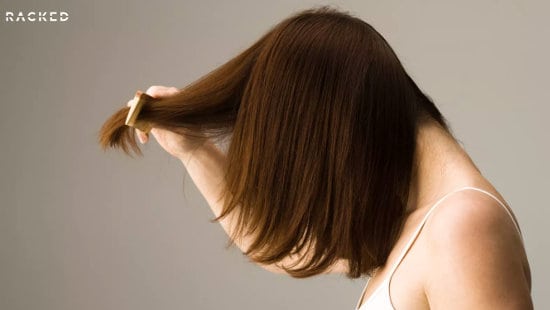A female hair transplant patient recounts her experience at Bernstein Medical.

Like many women, Alden Wicker felt self-conscious about her naturally high hairline and burdened with the high-maintenance of trying to keep her bangs perfectly positioned to cover her forehead. Alden discovered an article on Dr. Robert M. Bernstein, founder of Bernstein Medical – Center for Hair Restoration and pioneer of Follicular Unit Transplantation, and decided to see if he could fix her hairline. In an article she contributed to Racked, an online magazine published by Vox Media, Ms. Wicker describes her experience with Bernstein Medical and how thrilled she is will the results of her hair transplant.
Since the age of 13, Alden wanted full, voluminous hair and a lower hairline. After 16 years of covering her forehead with bangs, she started researching how to fix her naturally high hairline. In the course of her research, she stumbled on a 2009 article in the New York Times that featured Dr. Bernstein’s work in treating women with receding hairlines. She decided to come to his NY office for a consultation.
After Dr. Bernstein explained that she was a good candidate for a hair transplant, Alden scheduled her procedure for a cold Friday in January. Alden describes the entire procedure, including how Dr. Bernstein removed the strip and made sure the aesthetic plan was followed to a “T”.
She speaks about her post-op recovery and positive lifestyle changes that resulted from her procedure:
“By Tuesday, I was easily able to cover my forehead with my bangs and use BB cream to cover the yellowish cast to my forehead, the last remnants of the swelling and bruising.”
“When I went in for a trim before Memorial Day weekend and showed my hairdresser the new hairline, he was thrilled and started plotting with me to grow out my bangs.”
Alden even recollects how the transformation affected her self-esteem on a very important day, her wedding day. She says, “My new hairline had grown in enough to let my hairdresser pull the new hair back on the sides into a loose half-up style.”
Her bottom line:
“I bought myself aesthetic freedom, a carefree attitude, more minutes in my day that I could focus on living instead of ironing my hair and cringing at photos. And in that sense, it was totally worth it. My only regret is that I didn’t do this earlier.”
The article is titled, “I Hated My Hairline, So I Got a New One.”
Posted by 





 Dr. Bernstein discusses the technique of follicular unit
Dr. Bernstein discusses the technique of follicular unit 



